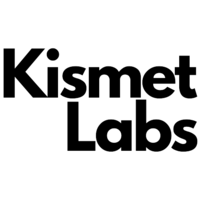Topping the list of the world’s worst malignancies is lung cancer, which is expected to claim 1.7 million lives around the globe in 2020. Knowing that early detection of lung cancer improves the prognosis is crucial here.
New medicines have been developed to fight lung cancer, but unfortunately, the illness still claims the lives of most sufferers. Patients are typically checked for lung cancer with low-dose computed tomography (LDCT) scans in the hopes of detecting the disease at an early, more treatable stage.
Sybil, an AI tool developed by scientists from MIT’s Abdul Latif Jameel Clinic for Machine Learning in Health, the Mass General Cancer Center (MGCC), and Chang Gung Memorial Hospital (CGMH), has been proposed in a recent study for use in determining the likelihood of developing lung cancer. With Sybil, screening is taken to the next level by independently evaluating LDCT image data to forecast a patient’s likelihood of acquiring lung cancer during the next six years without the need for a radiologist’s intervention.
The findings show that Sybil obtained C-indices of 0.75, 0.81, and 0.80 over six years using lung LDCT scans from the National Lung Cancer Screening Trial (NLST), the CHLA, and the CHLA, respectively. Even better, Sybil’s yearly prediction ROC-AUCs ranged from 0.86 to 0.94, with 1.00 being the best possible score.
Because early-stage lung cancer only occupies small sections of the lung, the imaging data used to train Sybil was largely devoid of any evidence of disease. When it came to predicting which lung would acquire cancer, the researchers found that the model had some predictive power even when humans couldn’t fully determine where the malignancy was. Therefore, the team believes Sybil may help close the gap in lung cancer screening deployment in the United States and internationally.
Sybil was created from NLST scans collected between 2002 and 2004, with the vast majority of participants (92% White) hailing from the United States. Before testing Sybil on CT scans with no obvious cancer symptoms, the team labeled hundreds of scans with evident malignant tumors to ensure that Sybil could appropriately estimate cancer risk.
Since advancements in CT technology over the years could potentially impact Sybil’s translation, the team opted to validate independently against more recent cohorts. They had already filtered out scans with images thicker than 2.5 mm from the initial Sybil build, but the data showed that image slice thickness varied over time. Sybil successfully generalized to these contemporary, multi-ethnic validation sets despite the prevalence of new technologies. Sybil’s continued success in CGMH is especially noteworthy given that this demographic is overwhelmingly composed of people who do not smoke.
One practical use for Sybil could be to reduce the number of scans or biopsies performed on patients with low-risk nodules. In fact, the Lung-RADS system’s adoption as the gold standard in the United States is based on the fact that it increases the specificity of LDCT screening compared to the nodule evaluation algorithm employed in the NLST research. Sybil improved upon Lung-RADS 1.0 in evaluating the NLST test set by decreasing the FPR on baseline scans from 14% to 8% while keeping sensitivity constant.
Check out the Paper and Blog. All Credit For This Research Goes To the Researchers on This Project. Also, don’t forget to join our Reddit Page, Discord Channel, and Email Newsletter, where we share the latest AI research news, cool AI projects, and more.
Tanushree Shenwai is a consulting intern at MarktechPost. She is currently pursuing her B.Tech from the Indian Institute of Technology(IIT), Bhubaneswar. She is a Data Science enthusiast and has a keen interest in the scope of application of artificial intelligence in various fields. She is passionate about exploring the new advancements in technologies and their real-life application.
Source link



